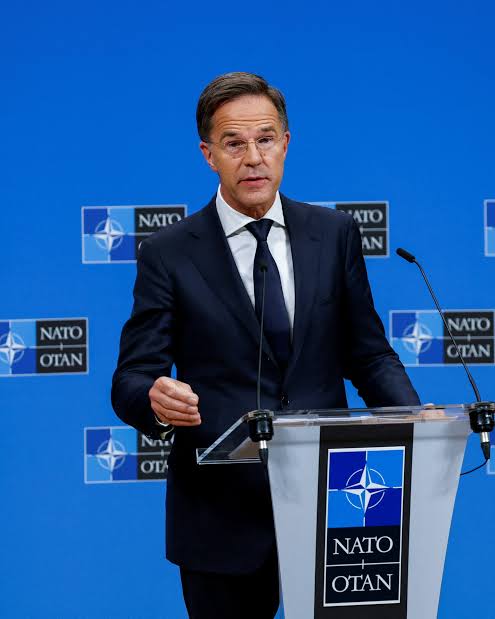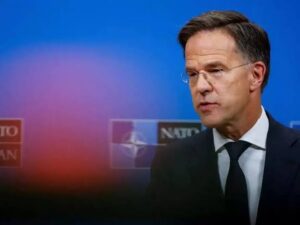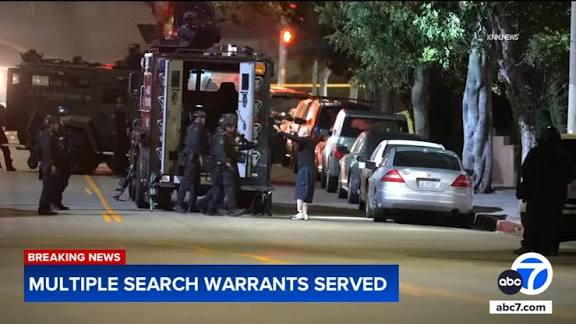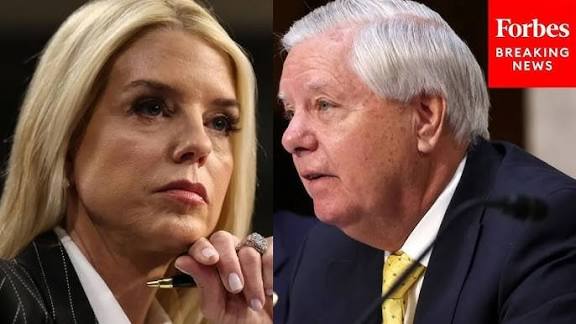Mark Rutte’s Bold NATO Move: Should Russian Drones Be Shot Down

After reading your statement released by NATO today, what this means that NATO is now going to shoot any human or unmanned. Today we will discuss about Mark Rutte’s Bold NATO Move: Should Russian Drones Be Shot Down
Mark Rutte’s Bold NATO Move: Should Russian Drones Be Shot Down
In recent weeks, NATO’s posture toward Russian incursions—particularly by unmanned aerial vehicles (drones)—has hardened. Under the leadership of Secretary-General Mark Rutte, NATO has made pronounced statements about defending allied airspace, including a willingness to shoot down drones that violate it. These developments come against a backdrop of rising tension on the alliance’s eastern flank, increased drone incursions, and fears that smaller violations may escalate into open conflict.
This article explores Rutte’s move, the justification and legal framework for shooting down drones, the risks involved, and whether the benefits outweigh the dangers. We also assess how this reflects broader shifts in NATO policy and strategy.
Context: What’s been happening

To assess Rutte’s move, it’s vital to see what’s led to this point:
-
Drone incursions into Poland: On the night of 9-10 September 2025, a large wave of Russian drones (estimates from about 19 to 23) entered Polish airspace, some penetrating deep into territory. NATO and Polish forces scrambled to intercept. Up to four of the drones were shot down.
-
Activating NATO’s Article 4 mechanism: Poland invoked Article 4 of the NATO treaty, signaling its concern over its security being threatened by these incursions.
-
Operation Eastern Sentry: In response to these drone incidents, NATO launched “Operation Eastern Sentry” on 12 September 2025. Its role is to bolster NATO’s ability to monitor and defend its eastern flank (air, sea, ground) and to respond more rapidly to violations.
-
Statements by Mark Rutte: The Secretary-General has been explicit that NATO is prepared to defend every inch of its territory. He describes drone incursions as “absolutely dangerous and reckless,” whether or not they are intentional. He’s also emphasized that shooting down such aerial objects is a decision made in real time, based on threat assessment and national authority.
The substance of Rutte’s position
Mark Rutte’s posture includes several key elements:
-
Right and duty to defend NATO airspace
Rutte is affirming that NATO member states have both the right and an obligation to defend their airspace. That includes use of force in certain circumstances. This is rooted in both international law and NATO treaty obligations. -
Use of intelligence and threat assessment
The decision to shoot down a drone (or aircraft) is not automatic; it depends on real-time intelligence about level of threat, whether the object is armed, what its intentions are, risk to civilians or infrastructure, etc. -
National authority within a collective framework
While NATO sets overall posture and coordinates responses, each member state retains national sovereignty in determining exactly when and how to respond in its own airspace. NATO supports and reinforces their ability, but doesn’t necessarily dictate every decision. -
Deterrence and escalation management
Rutte’s strategy implies deterrence: by signalling readiness and taking real action, NATO aims to make clear to Russia that incursions won’t be ignored. At the same time, there’s sensitivity to escalation: decisions to shoot down are cautious, depending on seriousness.
Arguments in favour of shooting down Russian drones
There are many compelling reasons why Rutte’s move is justified.
-
Sovereignty and territorial integrity
NATO member states have the right under international law (UN Charter, customary law) to defend their airspace and territory. Allowing repeated violations undermines sovereignty. Shooting down drones that violate airspace reinforces national borders. -
Deterrence
If incursions are met with zero consequence, Russia might escalate or test boundaries more aggressively. An assertive response could deter further violations, signalling NATO is serious. -
Protection of civilians and infrastructure
Drones may be unarmed, reconnaissance, or sometimes armed. Even reconnaissance drones could gather intelligence for attacks, or be involved in hybrid warfare. Some incursions may cause collateral damage: flying objects, debris, or mistaken targeting. Defence systems need to protect lives and property. -
Credibility of NATO
As an alliance, credibility matters. If NATO is seen as passive in the face of violations of allied territory, its credibility (both for deterrence and member confidence) may suffer. Members under threat need assurance that the alliance will act. -
Consistency and legal clarity
Clear rules of engagement and policies help reduce uncertainty and provide legal legitimacy. If NATO states consistently act in accordance with those rules, it reinforces norms of international conduct.
Arguments against, or risks involved
However, there are also serious risks and downsides that must be considered.
-
Risk of full escalation / unintended war
Shooting down a Russian drone—even a relatively small one—can provoke retaliation. If Russia claims it was unintentional, or a navigational error, escalation could spiral. There’s always risk of misinterpretation leading to wider conflict. -
Ambiguity over intent and identification
Determining who launched a drone, whether it’s armed, its purpose etc.—especially in real time—is difficult. If wrong, act of shooting could be diplomatically costly or illegal under international law. -
Collateral damage
Debris from destroyed drones may fall over populated areas, causing injury or damage. Also, air defence systems often are expensive and limited; misusing them wastes resources. -
Cost and resource constraints
Air defence, missile systems, radar, detection, response—these are expensive. Shooting down incursions on a large scale can strain capacity and budgets. -
Political and legal ramifications
International law regarding sovereignty, use of force, airspace violations, rules of engagement is complex. There may be need for domestic law changes. Also, in multilateral alliance, not all members may agree on thresholds or responses, so coordination and consensus are hard.
Legal and policy framework
To understand whether shooting down drones is permissible, it is essential to examine the relevant legal & policy frameworks:
-
International law on sovereignty and use of force: Under the UN Charter, states have the right to defend their sovereign territory. But they must adhere to principles of necessity and proportionality.
-
NATO treaty obligations: NATO treaty (especially Article 5, collective defense, and Article 4, consultations) provides that Allies must consult and assist one another. While no specific clause says “shoot drones,” defending member’s airspace is implicit in preserving territorial integrity.
-
National laws: Member states must ensure their national legislation authorises use of force in airspace, defines who can decide, what thresholds are needed.
-
Rules of engagement: NATO and member national military authorities have rules that govern when, how to engage aerial targets. Real-time intelligence and threat assessment are key. Rutte has stressed that such decisions are made “based on intelligence about the level of threat.”
How Rutte’s proposal compares to recent practice
Rutte’s position is not just theoretical. There are already precedents and recent events:
-
The drone wave in Poland led to actual downing of multiple drones. That incident is one of the first direct confrontations of this kind since the Russia-Ukraine war escalated.
-
Lithuania has passed legislation authorizing its armed forces to shoot down drones that unlawfully enter its airspace, even without direct threat, expanding from previous rules which required a direct threat.
-
Several NATO countries have scrambled fighter jets or taken other defensive measures. Estonia has experienced fighter-jet violations and responded by escorting.
These show that Rutte’s statements are matched by policy shifts on the ground.
Rutte’s Bold Move: Implications
What makes Rutte’s stance particularly significant:
-
Clearer deterrence posture
By stating unequivocally that NATO will defend airspace and shoot down drones, Rutte reduces ambiguity about NATO’s defensive red lines. -
Empowering eastern flank states
Countries like Poland, Lithuania, Estonia have been most at risk. This posture gives them greater assurance and backing. -
Operational changes
Through Eastern Sentry and related deployments, NATO is increasing readiness, shared surveillance, rapid response capabilities. This is more than statements; it’s capability building. -
Politico-strategic signal to Russia
Rutte’s public warnings, diplomatic pressure, along with action, send a message that violations will carry immediate consequences. This may alter Russian calculations.
Should Russian drones be shot down? A tentative conclusion
Given the context and arguments, here is a reasoned judgment:
-
Yes, under certain conditions. Shooting down Russian drones violating NATO airspace is justified when:
-
The drone’s presence is verified and tracked.
-
It poses a real threat (either by intent, payload, or surveillance purposes relevant to military operations).
-
There is no plausible non-lethal alternative (e.g., jamming, escorting, intercept without firing).
-
Risk to civilians is minimized and proportionality is respected.
-
-
No, when ambiguity is high. If the drone entry is minor or possibly accidental, non-lethal measures or engagement short of destruction are preferable to avoid escalation.
So, Rutte’s posture—emphasizing that shooting down is a decision made with intelligence and threat assessment—is wise. It tries to balance deterrence with caution.
Risks and what must be done to manage them
For NATO and member states to safely adopt this posture, certain safeguards/steps are essential:
-
Robust intelligence and identification systems
Ability to determine who launched a drone, its payload (if any), purpose, flight path, etc. -
Clear rules of engagement across member states, with shared understanding of thresholds, to avoid inconsistent or impulsive responses.
-
Legal frameworks domestically that authorize such actions, with parliamentary oversight, to sustain democratic legitimacy.
-
Diplomatic backchannels with Russia to clarify that some incidents may be unintentional, to provide mechanisms for de-escalation.
-
Communication with publics in NATO states, to explain why such actions are needed and reassure that accountability exists for mistakes.
-
Adequate resources and defensive systems: radar, interceptors, redundancies, to avoid overreliance on shooting down with costly systems.
What this says about the changing nature of warfare
Rutte’s stance illustrates several broader trends:
-
Drone warfare and hybrid threats are increasingly central. Drone incursions blur the lines between conventional warfare and reconnaissance, and between state and non-state actors.
-
Grey-zone tactics: Russia’s repeated airspace violations (both by drones and manned aircraft) are part of grey-zone escalation — testing responses without outright war.
-
Alliance politics: NATO is increasingly being forced to adapt not just to large scale threats, but frequent small provocations — and must develop a posture of resilience, readiness, and willingness to act even in ambiguous cases.
-
Deterrence by denial: Rather than just deterrence by threat, NATO is emphasizing capability to deny adversary space — making incursions less profitable by increasing cost and risk to the intruder.
Counterarguments & possible negative outcomes in more detail
While favorable in many cases, there are scenarios where shooting down drones could backfire:
-
If a drone is misidentified (civilian, meteorological, etc.), shooting it down could provoke international law claims, diplomatic crises.
-
If debris falls on civilian infrastructure or causes casualties, local backlash might erode support for the policy.
-
Russian escalation: Russia might respond by sending more or different kinds of threats: heavier drones, more frequent incursions, cyber attacks, or even introduction of manned aircraft. This could lead NATO into a spiral.
-
Resource depletion: Constant readiness and active engagements can fatigue air defence systems, personnel, budgets; might require more spending, which has political limits.
-
Domestic political risks: Citizens may question the costs, the risk of being dragged into conflict, possible mis-steps.
Alternatives or complements to shooting down drones
Shooting down should not be the only tool. Other policies and actions are vital:
-
Surveillance and detection: Better radars, AWACS, satellites, sensors to detect and track incursions early.
-
Non-kinetic countermeasures: Electronic warfare (jamming, spoofing), laser systems, directed energy, etc.
-
Diplomatic pressure: Sanctions, diplomatic protests, international legal mechanisms.
-
Building resilient infrastructure: Hardened facilities, civil preparedness for drone/damage incidents.
-
Coordination with civilian sectors: Air traffic control, homeland security, emergency services for dealing with debris, warnings, responses.
Broader geopolitical implications
Rutte’s boldness is not merely tactical; it has strategic consequences:
-
NATO-Russia relations may enter new tension phases. Russia may see this as an escalation.
-
Alliance solidarity: How consistently all NATO members follow similar rules will matter. If some are stronger (militarily, politically) and act more aggressively, while others are cautious, it could create strategic disunity or ambiguity.
-
Impact on global norms: If shooting down state-operated drones becomes accepted practice, norms regarding airspace violations may shift. That may impose expectations on other powers.
-
Precedent for other regions: Other alliances or states watching NATO might adopt similar policies; this could affect how airspace sovereignty is enforced globally.
Conclusion
Mark Rutte’s bold NATO move—stating that drones violating NATO territory may be shot down, with decisions made in real time based on threat assessment—is a significant shift in NATO’s posture. It reflects increasing pressure from repeated Russian violations, strong demands from eastern NATO states for credible defense, and the evolving nature of threats in the drone age.
While there are risks—escalation, legal ambiguity, misidentification—Rutte’s formulation, which emphasizes intelligence, proportionality, and national authority within a collective framework, is meant to manage those risks.
Overall, the move appears justified. The protection of territorial integrity, deterrence value, and boosting NATO’s credibility are strong drivers. But success depends on prudent implementation: clear rules, robust intelligence, diplomatic channels, and balanced responses. In today’s fraught strategic landscape, doing nothing—or failing to act decisively—may be more dangerous than taking risks.
How useful was this post?
Click on a star to rate it!
Average rating 0 / 5. Vote count: 0
No votes so far! Be the first to rate this post.
About the Author
usa5911.com
Administrator
Hi, I’m Gurdeep Singh, a professional content writer from India with over 3 years of experience in the field. I specialize in covering U.S. politics, delivering timely and engaging content tailored specifically for an American audience. Along with my dedicated team, we track and report on all the latest political trends, news, and in-depth analysis shaping the United States today. Our goal is to provide clear, factual, and compelling content that keeps readers informed and engaged with the ever-changing political landscape.




